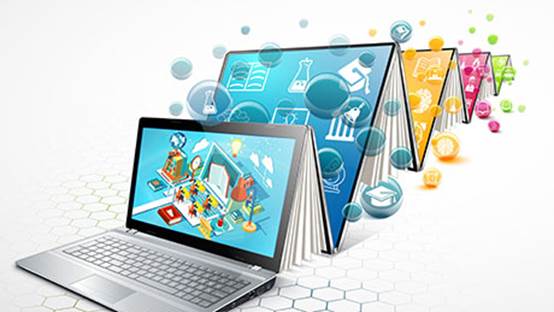Produits, solutions et services pour les entreprises

The COVID-19 pandemic has impacted every field around the world, and the effects are certainly being felt in education. In fact, over the last year or so, about 1.5 billion students — 90% of all primary, secondary, and university level students worldwide — have been unable to attend their schools or campuses for at least some period of time.
This period of disruption has been transformative, as education providers worldwide have hurried to adopt smart technologies to ensure education continuity for all —adapting to online teaching and learning with new, more efficient, agile, and effective solutions.
The target customers for education systems are, of course, students, teachers, staff, and alumni. The core business operations must enhance and optimize the customer experience of all of these groups, and revolve around the education platform, the learning environment, the teaching methods, and the campus environment.
To carry out these duties, they need data from the education providers about the students, the teachers, the curriculum, and the assessment results. Each student, teacher, and member of staff requires a digital identity so that their progress, development, and assessment can be measured against national Key Performance Indicators (KPIs). If a national curriculum is provided, it can be published online for all education providers that are enrolled to access. In order to manage all this data, a national education platform is required to process it and provide strategic governance and planning to achieve the objectives.
In essence, the education platform consists of national infrastructure connectivity between the education providers; high speed national and international networks for sharing resources and scientific research; and a cloud platform to process all the data, for curriculum storage (including Massive Open Online Courses, also known as MOOCs), and to host all the applications required as well as support analytics and reporting.
With the increased use of remote and online classes and videoconferencing applications, now is the time to implement national solutions and use eClassrooms to transform the ways students are taught. Teachers in traditional classrooms can simultaneously broadcast to remote branch eClassrooms to reach more students, while maintaining the interactive aspect of teaching by using products such as HUAWEI IdeaHub — an interactive digital whiteboard for videoconferencing, writing, drawing, and sharing.
While teachers are able to focus on teaching, technology can be used to improve both classrooms and remote branch classrooms for both schools and universities by optimizing various processes, ultimately ensuring that remote education is more cost effective.
The next level of evolution of the learning environment centers on Augmented Reality (AR) and Virtual Reality (VR), which create a virtual and interactive platform for students and teachers to interact, either on site or remotely.
Connecting schools to the Internet in remote areas is an entry point for bringing connectivity to entire communities, to reduce the digital divide, enable digital literacy. With its interactive learning functions, HUAWEI IdeaHub plays a key role in enabling online teaching methods for remote classrooms. The built-in AI technology adds to the functionality and enhances the interactive audiovisual experience for the students. As these teaching methods are introduced, the curriculum has to be adapted to encompass these additional audiovisual benefits, which are unlike those of traditional textbook teaching methods.
One of the new teaching methods that has been introduced as result of the pandemic is Online-Merge-Offline (OMO) learning. OMO learning uses a hybrid infrastructure that combines open educational practices and real-time learning spaces, both online and offline.
Education campuses need to be run as efficiently as possible to be cost effective, and introducing technology can help to automate and optimize operational procedures. A smart management platform is needed to collect essential security, safety, and facility data to handle activities. Data is collected from multiple integrated sub-systems, including video surveillance, access control, fire detection, Wi-Fi, parking management, and Building Management Systems (BMS).
To enhance the user experience on education campuses, a converged network and all-wireless strategy is advisable. A converged network deploys Software-Defined Networking (SDN) to act as one network — wired and wireless — incorporating integrated security, all-wireless coverage, and predictive AI-based Operations and Maintenance (O&M). An all-wireless strategy is cost effective, too, reducing the costs of infrastructure, maintenance, and future upgrades.
Disclaimer: The views and opinions expressed in this article are those of the author and do not necessarily reflect the official policy, position, products, and technologies of Huawei Technologies Co., Ltd. If you need to learn more about the products and technologies of Huawei Technologies Co., Ltd., please visit our website at e.huawei.com or contact us.